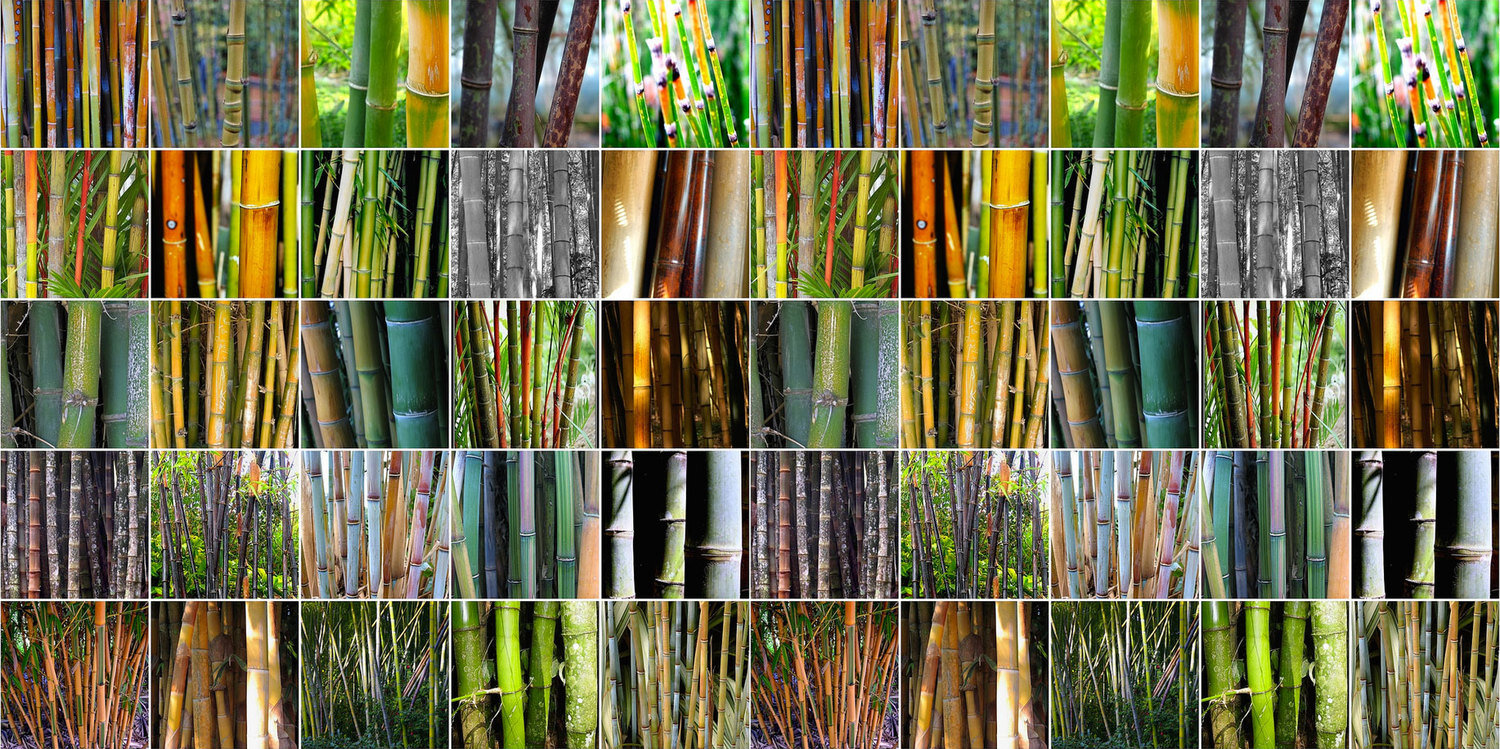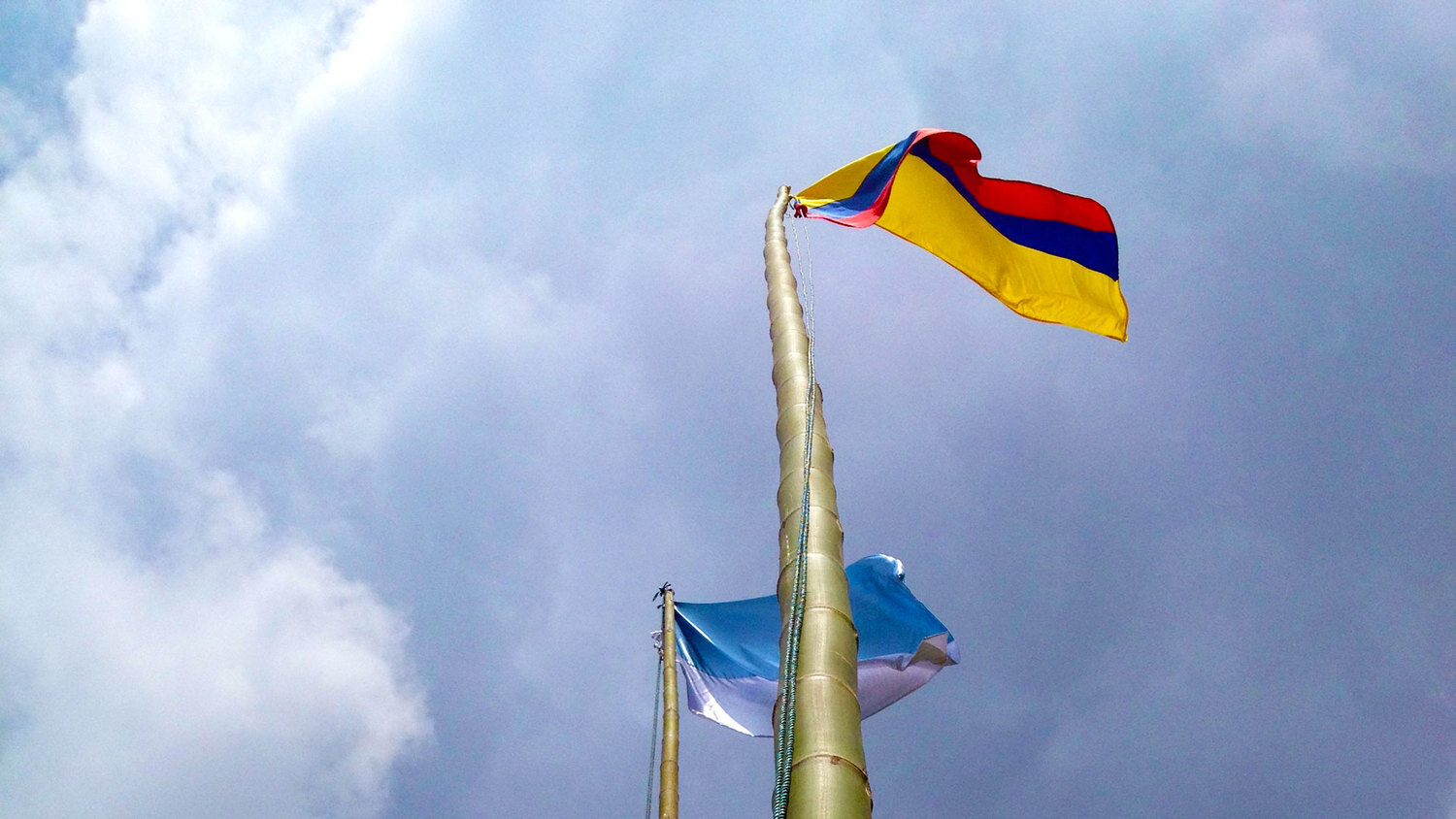90 Types of Bamboo used for Building and Construction
What type of bamboo is best for building? The best bamboo species for building and construction are found in the tropics, more specifically within the genera: Guadua, Dendrocalamus and Bambusa. Tropical bamboos generally grow taller and bigger than temperate bamboos and have thicker walls, which often results in better structural and mechanical properties.
From the more that 1700 bamboo species that exist in the world there are only 90 species that have documented records for being used in construction. Many other bamboos are utilized for building crafts and furniture, but in this article we want to focus specifically on bamboo species that can be used for building houses, structures, bridges, trusses, roof support systems, scaffolding, etc.
How Strong is Bamboo?
History proves that bamboo is strong, very strong. With proper joinery, bamboo poles can be used to create incredible spans. The Chinese even invented suspension bridges with tension cables up to 120 meters long that were made by braiding the exterior part of bamboo poles.
However, testing the mechancial properties of a particular bamboo species is very complex as many factors can affect the outcome. Growth conditions such as climate, altitude and soil affect the strength properties of bamboo. Bamboo grown on slopes is stronger than bamboo grown in valleys, and bamboos that grow in poor dry soils are usually more solid than those grown in rich soils.
Then there is also the aspect of age, moisture content, and part of the culm (basal, middle or top part). While tensile strength remains the same throughout the age of the bamboo plant, compressive strength increases as it gets older (5-6 years). For all of these reasons, studies often show different results even within the same species.
Much more details and different test results can be found in our article about the Mechanical Properties of Bamboo which concludes that:
The average tensile strength of most construction grade bamboo species is situated around 160 N/mm² which is 3 times higher than most conventional construction grade timbers.
The average compressive strength of most construction grade bamboo species is situated between 40 and 80 N/mm² which is twice to four times the value of most timber species.
The average bending strength of most construction grade bamboo species varies between 50 and 150 N/mm² and is twice as strong as most conventional structural timbers.
Construction Grade Bamboo Species
Thick-walled bamboo (Dendrocalamus asper)
The list below shows all the known construction grade bamboo species (in alphabetic order), and it includes the maximum length and diameter of each species along with its average wall thickness measured at the lower part of the culm. Wall thickness is species-specific, and certainly correlated with culm length and culm diameter, but often not linear. For instance, basal culm can be solid, lower and mid-culm thick-walled, upper culm thin-walled with small lumen, and culm apex solid.
Giant bamboos with thick walls are best for heavy duty construction such as multi-storey houses and bridges whereas smaller diameter bamboos or large bamboos with thinner walls are only suited for light or temporary structures. For construction purposes, wall thickness, density and fiber strength are the most important properties for greatest structural strength.
What is not stated in the list are the mechanical properties of each species. By comparing the mechanical properties of each species we could even order each bamboo by its tensile, compression and bending strength, but as mentioned earlier, test results are often incomplete due to a lack of information about the testing procedures and/or used samples.
The goal of this list is to give an initial starting point, often the best bamboo for building and construction is the one you can easily source or is abundantly available in your region. But, if you are lucky enough to live in and area where Guadua angustifolia (Latin America) or Dendrocalamus asper (Southeast Asia) grows, then you have access to which are considered the strongest construction bamboos in the world!
| Species | Max. Length | Max. Diameter | Culm Wall | Light Construction | Heavy Construction |
|---|---|---|---|---|---|
| Apoclada simplex | 8 m | 5 cm | thick | ||
| Bambusa balcooa | 25 m | 15 cm | very thick | ||
| Bambusa bambos | 30 m | 18 cm | very thick | ||
| Bambusa burmanica | 20 m | 10 cm | solid | ||
| Bambusa clavata | 20 m | 9 cm | thick | ||
| Bambusa dissimulator | 15 m | 7 cm | thick | ||
| Bambusa eutuldoides | 12 m | 6 cm | thick | ||
| Bambusa grandis | 15 m | 10 cm | thick | ||
| Bambusa lako | 15 m | 8 cm | thin | ||
| Bambusa lapidea | 17 m | 7 cm | solid | ||
| Bambusa longispiculata | 15 m | 8 cm | thick | ||
| Bambusa malingensis | 10 m | 6 cm | thick | ||
| Bambusa nutans | 12 m | 7 cm | very thick | ||
| Bambusa oldhamii | 12 m | 9 cm | thin | ||
| Bambusa oliveriana | 15 m | 5 cm | thick | ||
| Bambusa pallida | 20 m | 8 cm | thin | ||
| Bambusa polymorpha | 25 m | 15 cm | thick | ||
| Bambusa rigida | 9 m | 5 cm | thick | ||
| Bambusa spinosa | 25 m | 12 cm | thick | ||
| Bambusa textilis | 12 m | 6 cm | thin | ||
| Bambusa tulda | 20 m | 10 cm | very thick | ||
| Bambusa tuldoides | 10 m | 5 cm | thick | ||
| Bambusa valida | 16 m | 12 cm | thin | ||
| Bambusa variostriata | 12 m | 7 cm | thick | ||
| Bambusa vulgaris | 20 m | 10 cm | thin | ||
| Chimonocalamus delicatus | 8 m | 4 cm | thick | ||
| Chimonocalamus pallens | 6 m | 3 cm | thick | ||
| Chusquea culeou | 7 m | 4 cm | solid | ||
| Chusquea gigantea | 15 m | 5 cm | solid | ||
| Dendrocalamus asper | 30 m | 20 cm | thick | ||
| Dendrocalamus barbatus | 18 m | 15 cm | thick | ||
| Dendrocalamus brandisii | 33 m | 20 cm | thick | ||
| Dendrocalamus copelandii | 30 m | 25 cm | thin | ||
| Dendrocalamus dianxiensis | 28 m | 18 cm | thick | ||
| Dendrocalamus giganteus | 30 m | 30 cm | thick | ||
| Dendrocalamus hamiltonii | 23 m | 18 cm | thick | ||
| Dendrocalamus hookeri | 20 m | 15 cm | thick | ||
| Dendrocalamus jianshuiensis | 18 m | 12 cm | thin | ||
| Dendrocalamus latiflorus | 25 m | 20 cm | thick | ||
| Dendrocalamus longispathus | 18 m | 10 cm | thick | ||
| Dendrocalamus membranaceus | 18 m | 10 cm | thin | ||
| Dendrocalamus peculiaris | 18 m | 15 cm | thick | ||
| Dendrocalamus pendulus | 30 m | 9 cm | thin | ||
| Dendrocalamus sikkimensis | 18 m | 13 cm | thick | ||
| Dendrocalamus sinicus | 30 m | 30 cm | thick | ||
| Dendrocalamus stocksii | 9 m | 4 cm | solid | ||
| Dendrocalamus strictus | 15 cm | 8 cm | solid | ||
| Dendrocalamus xishuangbannaensis | 28 m | 22 cm | thin | ||
| Dendrocalamus yunnanicus | 25 m | 18 cm | thin | ||
| Gigantochloa albociliata | 10 m | 3 cm | thick | ||
| Gigantochloa apus | 20 m | 9 cm | thin | ||
| Gigantochloa atroviolacea | 16 m | 10 cm | thin | ||
| Gigantochloa atter | 22 m | 10 cm | thick | ||
| Gigantochloa balui | 12 m | 8 cm | thin | ||
| Gigantochloa kuring | 25 m | 7 cm | thick | ||
| Gigantochloa levis | 20 m | 13 cm | thin | ||
| Gigantochloa ligulata | 10 m | 6 cm | thick | ||
| Gigantochloa manggong | 15 m | 7 cm | thin | ||
| Gigantochloa nigrociliata | 20 m | 6 cm | thin | ||
| Gigantochloa pruriens | 15 m | 12 cm | thin | ||
| Gigantochloa robusta | 20 m | 9 cm | thin | ||
| Gigantochloa rostrata | 8 m | 4 cm | thick | ||
| Gigantochloa scortechinii | 20 m | 12 cm | thin | ||
| Gigantochloa verticillata | 20 m | 10 cm | thick | ||
| Guadua aculeata | 25 m | 18 cm | thick | ||
| Guadua amplexifolia | 20 m | 10 cm | solid | ||
| Guadua angustifolia | 25 cm | 15 cm | thin | ||
| Guadua chacoensis | 20 m | 15 cm | thin | ||
| Guadua macrostachya | 18 m | 7 cm | thin | ||
| Guadua paniculata | 10 m | 3 cm | thick | ||
| Guadua sarcocarpa | 20 m | 10 cm | thin | ||
| Guadua superba | 20 m | 15 cm | thick | ||
| Guadua trinii | 10 m | 5 cm | thick | ||
| Guadua velutina | 15 m | 10 cm | thick | ||
| Indosasa sinica | 15 m | 10 cm | thick | ||
| Melocanna baccifera | 20 m | 7 cm | thin | ||
| Oldeania alpina | 20 m | 12 cm | thick | ||
| Oreobambos buchwaldii | 18 m | 10 cm | thin | ||
| Otatea acuminata | 10 m | 3 cm | thick | ||
| Oxytenanthera abyssinica | 10 m | 8 cm | solid | ||
| Phyllostachys edulis | 23 m | 18 cm | thin | ||
| Phyllostachys kwangsiensis | 16 m | 10 cm | thin | ||
| Phyllostachys makinoi | 16 m | 10 cm | thin | ||
| Phyllostachys reticulata | 20 m | 15 cm | thin | ||
| Phyllostachys sulphurea | 8 m | 4 cm | thin | ||
| Schizostachyum grande | 22 m | 12 cm | thin | ||
| Schizostachyum lumampao | 15 m | 8 cm | thin | ||
| Thyrsostachys oliveri | 15 m | 8 cm | solid | ||
| Thyrsostachys siamensis | 13 m | 6 cm | solid | ||
| Valiha diffusa | 10 m | 10 cm | thin |






